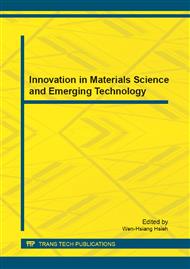p.27
p.32
p.37
p.43
p.48
p.53
p.58
p.63
p.68
Development of Stand-Alone Type Hydraulic Actuator for Valve Remote Control System
Abstract:
In the case of hydraulic power system of ships or marine facilities, many kinds of mechanical, electrical, hydraulic components are connected to each other very complicatedly. It is very hard to disassemble or reconfigure the hydraulic system. Therefore there are increasing demands from industry for a stand-alone type actuator and a valve remote control system. Valve remote control system (VRCS) is a convenient system which it possible to operate the valves installed in the cargo or ballast tanks from the remote wheelhouse. This paper is dealing with a new stand-alone type hydraulic actuator for a valve remote control system. The stand-alone type hydraulic actuator consists of a gear pump, an AC motor, a check valve, a relief valve and a controller. We try to design and implement the stand-alone type hydraulic actuator and this tries to be verified through an experiment. This research is a contribution to simplify a hydraulic system, improve responsibility of dynamic power system, and reduce an energy loss in a ships or marine facilities.
Info:
Periodical:
Pages:
48-52
Citation:
Online since:
December 2011
Authors:
Keywords:
Price:
Сopyright:
© 2012 Trans Tech Publications Ltd. All Rights Reserved
Share:
Citation:


